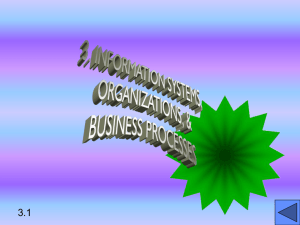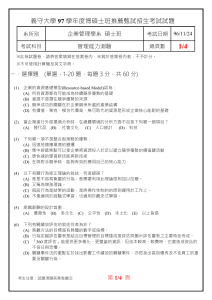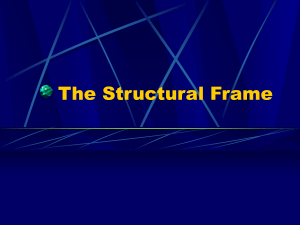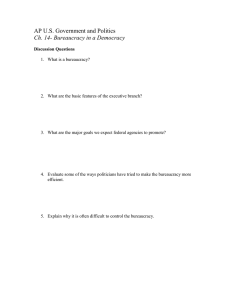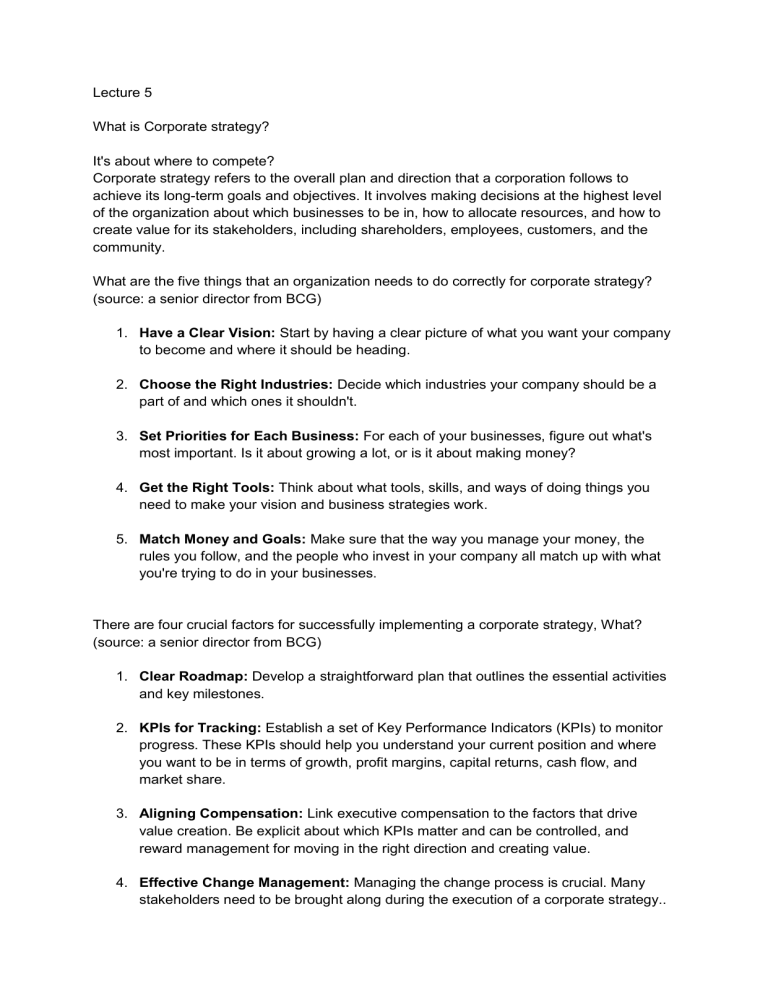
Lecture 5 What is Corporate strategy? It's about where to compete? Corporate strategy refers to the overall plan and direction that a corporation follows to achieve its long-term goals and objectives. It involves making decisions at the highest level of the organization about which businesses to be in, how to allocate resources, and how to create value for its stakeholders, including shareholders, employees, customers, and the community. What are the five things that an organization needs to do correctly for corporate strategy? (source: a senior director from BCG) 1. Have a Clear Vision: Start by having a clear picture of what you want your company to become and where it should be heading. 2. Choose the Right Industries: Decide which industries your company should be a part of and which ones it shouldn't. 3. Set Priorities for Each Business: For each of your businesses, figure out what's most important. Is it about growing a lot, or is it about making money? 4. Get the Right Tools: Think about what tools, skills, and ways of doing things you need to make your vision and business strategies work. 5. Match Money and Goals: Make sure that the way you manage your money, the rules you follow, and the people who invest in your company all match up with what you're trying to do in your businesses. There are four crucial factors for successfully implementing a corporate strategy, What? (source: a senior director from BCG) 1. Clear Roadmap: Develop a straightforward plan that outlines the essential activities and key milestones. 2. KPIs for Tracking: Establish a set of Key Performance Indicators (KPIs) to monitor progress. These KPIs should help you understand your current position and where you want to be in terms of growth, profit margins, capital returns, cash flow, and market share. 3. Aligning Compensation: Link executive compensation to the factors that drive value creation. Be explicit about which KPIs matter and can be controlled, and reward management for moving in the right direction and creating value. 4. Effective Change Management: Managing the change process is crucial. Many stakeholders need to be brought along during the execution of a corporate strategy.. It's essential to maintain alignment and communication to ensure everyone is on the same page. (important factor) What is an organization theory? Katz (entrepreneurship) ● An organization should have resources and contracts ● have some sort of boundaries as legal and contracts to be able to drive an organization. ● striving to develop should have goals and strategy, and also transactions should occur. Daft (organizational researcher) ● Social entities (abstract) ● Structured & coordinated activity systems ● Linked to external environment ● Goal directed What does “Industrial life cycle” mean? What does “cost based competition” mean? Is when companies focus on offering their products or services at lower costs than their competitors. In simpler terms, it's a race to see who can make things cheaper while maintaining quality. Explain what “Dominant Design” is Think of a dominant design in business like a popular and widely accepted template or model for a product. It's the version of a product that everyone agrees works best and becomes the standard Give examples of a “Dominant Design” product? Imagine smartphones. In the early days, there were all sorts of shapes, sizes, and features. But eventually, a dominant design emerged. It's the sleek rectangular device with a touchscreen, a few buttons, and a set of common features like calls, texts, and apps. This design became the standard for smartphones. Give an example of 2 different “Standards” that can be set? ● Formal standard ● De-facto standard Explain “Formal standard” A formal standard refers to a documented set of guidelines, specifications, or requirements that establish a uniform and recognized way of doing things within a particular context or industry. Example ISO 9001 Explain “De-facto standard” De facto standards are not formally established through a standard-setting process but gain prominence because they prove to be effective, efficient, or simply the most popular choice within a particular field or technology.Example the QWERTY-keyboard Give an example of 2 types of organizations ● For profit ● Not for profit Explain “For profit” organization A "for-profit" organization is a type of business or entity that operates with the primary goal of making money and generating profits Explain “Not for profit” organization A "not-for-profit" organization is an institution that operates with the primary goal of serving a specific mission or purpose, rather than generating profits for its owners or shareholders. What are the advantages of being “the first mover”? ●Brand loyalty ●Technological leadership ●Pre-emption of scarce assets ●Exploiting buyers’ switching costs ●Reaping increasing returns advantages What are the Disadvantages of being “the first mover”? ● R&D expenses – knowledge development ● Underdeveloped supply- and distribution channels ● Immature enabling technologies and complements To be able to create “the organizational design” it should require 5 componentes, what? ● Strategic Apex ● Middle line ● Operating Core ● Support staff ● Technostructure Explain the “Strategic Apex” The "Strategic Apex" is a concept in organizational theory that refers to the highest level of an organization's management hierarchy, where strategic decisions are made and the organization's overall direction is set. Explain the “Middle line” Referring to the management, the middle line serves as a bridge between the higher-ups who set the direction and goals of the organization and the frontline workers who carry out the day-to-day tasks. Explain the “Operating core” The "Operating Core" in an organization is like the heart of the operation. These are the employees or team members who are directly involved in performing the core tasks and activities that keep the organization running smoothly. Explain the “Support staff” The "Support Staff" in an organization are the individuals or teams responsible for providing various kinds of assistance and services that enable the organization to function efficiently. They play a crucial role in supporting the core functions of the organization and ensuring that everything runs smoothly. (example HR) Explain the “Technostructure” It refers to a specific group or department within an organization responsible for analyzing and managing various technical aspects of the organization's operations. This group plays a vital role in ensuring that the organization functions efficiently and effectively. There are 5 different organizational designs, what? (source: Mintzberg) ● ● ● ● ● Simple Structure Machine Bureaucracy Professional bureaucracy Divisionalized form Adhocracy Explain the organizational design, “Simple structure” The organizational design that is characterized by its straightforward and uncomplicated approach to management. This design is typically found in small, entrepreneurial organizations or startups, where there is a single person or a small group of individuals at the top of the hierarchy making decisions and overseeing the entire operation. Explain the organizational design, “Machine bureaucracy” Machine bureaucracy is a type of organizational structure characterized by a high degree of formalization, standardized procedures, and a rigid hierarchy. This structure is often found in large manufacturing companies Explain the organizational design, “Professional bureaucracy” The "Professional Bureaucracy" is an organizational design commonly found in institutions like universities, hospitals, law firms, and other knowledge-intensive organizations. It relies on the expertise and specialized knowledge of its employees to function effectively. Explain the organizational design, “Divisionalized form” The divisionalized form is an organizational design structure that groups an organization's activities or functions based on specific products, services, customer segments, or geographic locations. In this structure, each division operates somewhat independently, with its own set of resources, such as personnel, budget, and equipment Explain the organizational design, “Adhocracy” Adhocracy is an organizational design characterized by flexibility, innovation, and a lack of formal hierarchy. In an adhocracy, decision-making authority is often decentralized, and individuals or teams have a high degree of autonomy in how they approach tasks and projects. What is “Resource dependency theory”? Resource Dependency Theory (RDT) is a concept in organizational theory and management that explains how organizations depend on external resources to function effectively and survive. There are 4 different sources of “Power”, what? ● Legitimate power ● Coercive power ● Expert power ● Referent power Explain “Legitimate power” Power in positions, resources, information Explain “Coercive power” Reward or punish Explain “Expert Power” is a type of power that individuals or leaders wield based on their expertise, knowledge, or skills in a particular subject. Explain “Referent power” Personal characteristics, identification What are the advantages with power in an organization? ● Power enables leaders to make decisions more efficiently. ● Power can influence others, including team members, colleagues, and subordinates, to align with organizational goals and objectives. ● Leaders with power can motivate and reward employees for their performance. What are the disadvantages with power in an organization? ● Individuals in positions of power may misuse their authority to manipulate or exploit others for personal gain, leading to unethical behavior and distrust within the organization. ● A toxic power dynamic can foster a negative organizational culture characterized by fear, mistrust, and low morale. ● The misuse of power can create conflicts and resistance among employees, as they may perceive it as unfair or oppressive. Explain “the Contingency theory” Is a management and organizational theory that suggests there is no one-size-fits-all approach to leadership and management. Instead, it proposes that the most effective leadership or management style depends on the specific situation in which it is applied.
